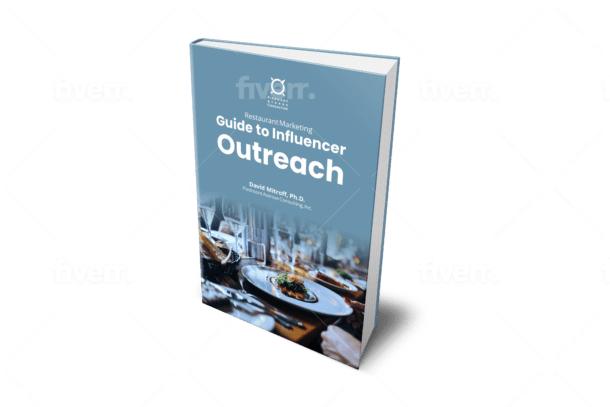Risk is an inevitable part of any business. Different risks pose various problems, and for any business to thrive, it must find ways to manage these risks. For example, the COVID-19 pandemic was a massive disruption that swept companies that could not adapt accordingly. However, even risks with minimal disruption can be disastrous if managed inappropriately.
As a South Australian business owner, how can you develop a robust strategic system to help limit or mitigate business risks? This article explores essential details about business risk mitigation.
But first, why manage risk?
Risk management can help you to:
- Foster a safe work environment
Worker safety is a crucial part of doing business. Companies must uphold standard health and safety practices by following standard procedures or enforcing wearing the correct personal protective equipment.
- Improve your business’s ability to handle emergency
National or economic threats are emergencies that can wreak any business. But with a proper emergency management plan, you can build your business to take massive stress.
- Ensure customer satisfaction
No business can succeed without treating customers fairly. Hence, every company must improve relationships with employees, suppliers, the community and customers. Understanding their expectations can help curb actions/practices that may cause you to lose business.
- Reduce your compliance and insurance costs
Ignoring certain business risks can lead to severe penalties and fines. Moreover, you can significantly reduce your insurance costs by having a lower risk burden.
Legal risks that you must manage
As a South Australian business, the law requires you to manage specific risks. Examples of such rules include:
- Work and health safety (WHS) laws
The law imposes a legal duty on employers to ensure, as far as reasonably practicable, the health, welfare, and safety of employees at all times by reducing the risk of accidents and injury.
- Australian Consumer law
This is a customer protection law to ensure that companies treat customers fairly.
- Worker’s compensation insurance
Should a worker be injured due to work-related activities, the worker’s compensation insurance assures that the worker gets the necessary medical care and compensation for the income they lose until they can return to work.
- Environmental laws
Environmental sustainability is a significant focus of the Australian government. Hence, you must manage business practices that may potentially damage the environment.
Categories of risks
Business risks are categorized into three. They include opportunity-based risk, uncertainty-based risk, and hazard-based risk.
- Opportunity-based risks
These kinds of risks arise when selecting between alternative opportunities. You risk missing out on a better opportunity or getting an unintended result by committing to one option. Examples of such risks include selling a new service or product, moving the business to a new location, or buying a new property.
- Uncertainty-based risks
The world is filled with infinite possibilities. Hence, unexpected events are bound to occur occasionally. Examples include:
Damage by flood, fire, or other natural disasters
- Major economic downturn
Loss of market share due to a new competition
Failure of a vital supplier, client or customer.
Because these events are hard to predict, you must be prepared to handle them. Some of the things you can do include:
- Have an emergency response plan to deal with unexpected damages
- Have multiple suppliers to reduce the risk of failure
- Continuously seek customer feedback and improve your service.
- Monitor trends in your business climate and be prepared for the worse.
- Get help from financial and other experts to strengthen your business.
- Hazard-based risks
These risks arise from the work environment and practices that threaten the health and safety of employees. Examples include:
- Physical hazards like severe noise levels, extreme heat, confined spaces, intense vibration and more
- Equipment hazards caused by faulty machinery and poorly designed procedures
- Chemical hazards arising from flammable material, toxins, and carcinogenic chemicals
- Biological hazards caused by bacteria, fungi, viruses and pests
- Ergonomic hazards resulting from poor workplace design and sitting positions
- Psychological hazards resulting from discrimination, workplace bullying, harassment, and heavy workload
How to Mitigate Business Risks
- Identify and determine key risks
To mitigate risk, you must first identify critical sources of risks for your business. Think about the different categories of risks that apply to your business. However, you cannot eliminate all risks because there are infinite sources of risks. That’s why you must focus on risks that can impact your business the most.
When identifying key risks, it is essential to gain insight from key stakeholders like employees, contractors, government agencies, etc., as they can help point you to critical risks you might overlook.
- Mitigate hiring risks with employment screening
Employers often focus on procedures and processes, forgetting that employees are the first and most significant source of risk. As a savvy employer, you must address this by ensuring you get the right people for the police check.
In South Australia (SA), conducting a police check SA reveals the disclosable criminal background of an applicant. With that information, you can determine if the individual poses a threat to workplace safety or other organizational risks based on their criminal record. With that information, you can make better hiring decisions.
- Analyze the risks
Once you’ve identified key risks, you must prioritize to know which ones are most urgent. Thankfully, the risk assessment matrix is a useful tool for prioritizing risks. Using a scale of 1 to 4, all you need to do is determine the following:
- The likelihood of the risk happening. [1 = least likely to 4 = most likely]
- The consequence/damage if the risk occurs. [1 = minor damage to 4 = severe damage]
The risk level is calculated by multiplying the risk likelihood by the potential consequence.
If the likelihood is very high (4) and the potential consequence is very high (4), the risk level is 16, meaning that this is a very urgent risk that needs to be addressed. Use this procedure to rank the risks you’ve identified.
- Evaluate and treat the risk
It would help if you defined risk criteria to decide what risks are acceptable for your business. Any risks that fall above your risk criteria must be addressed. For example, if you choose that the feedstock supply poses a single point of failure for your business, having a single supplier might pose a significant risk to your business. To address such a risk, you may partner with multiple suppliers. Diversifying your business is also another way to mitigate a single point of failure risk.








